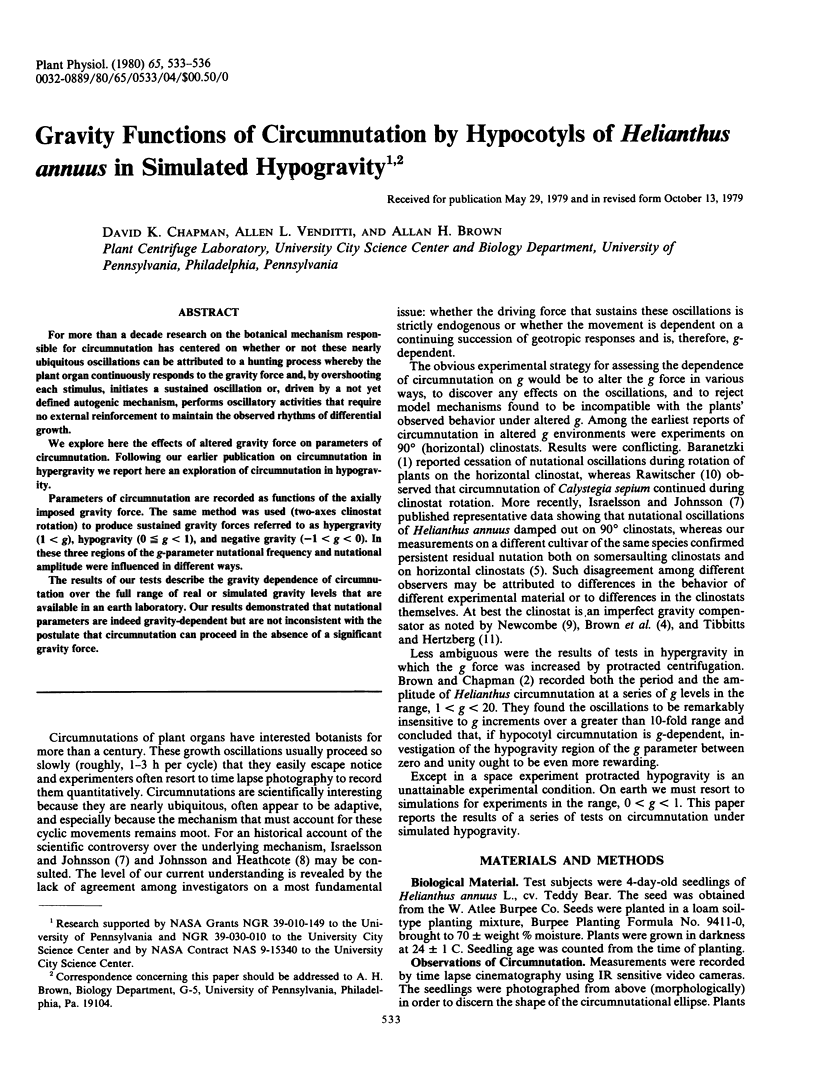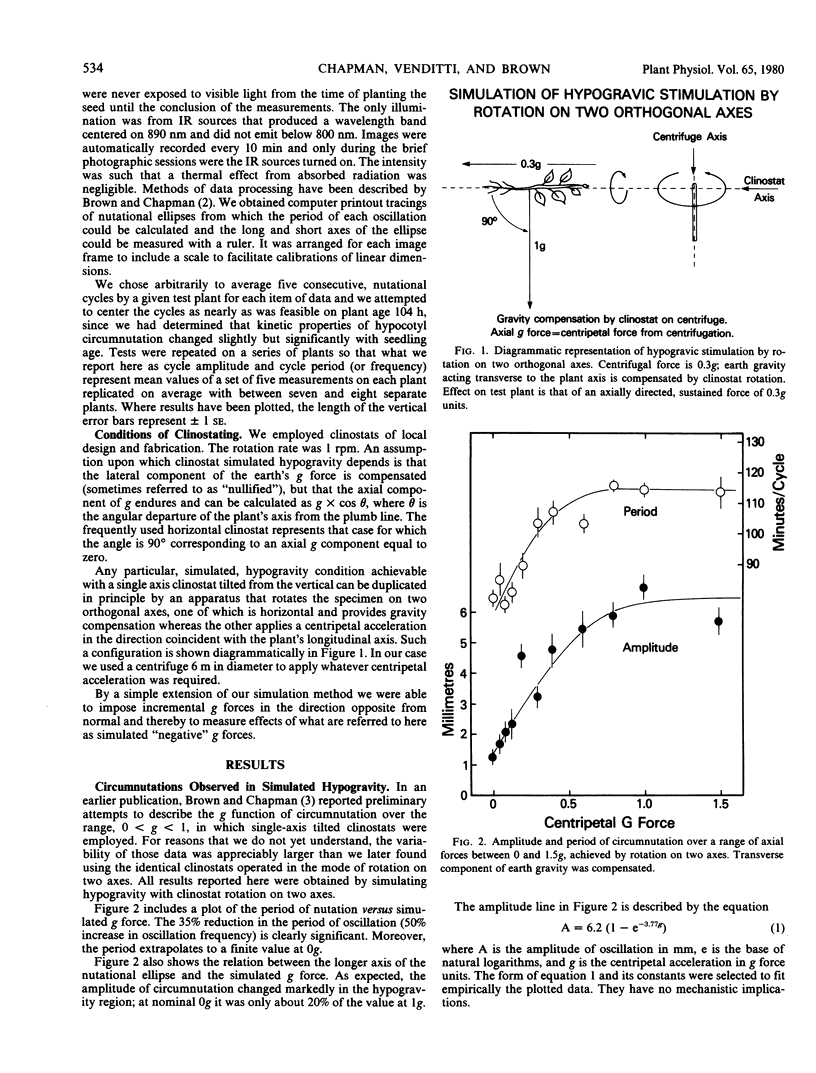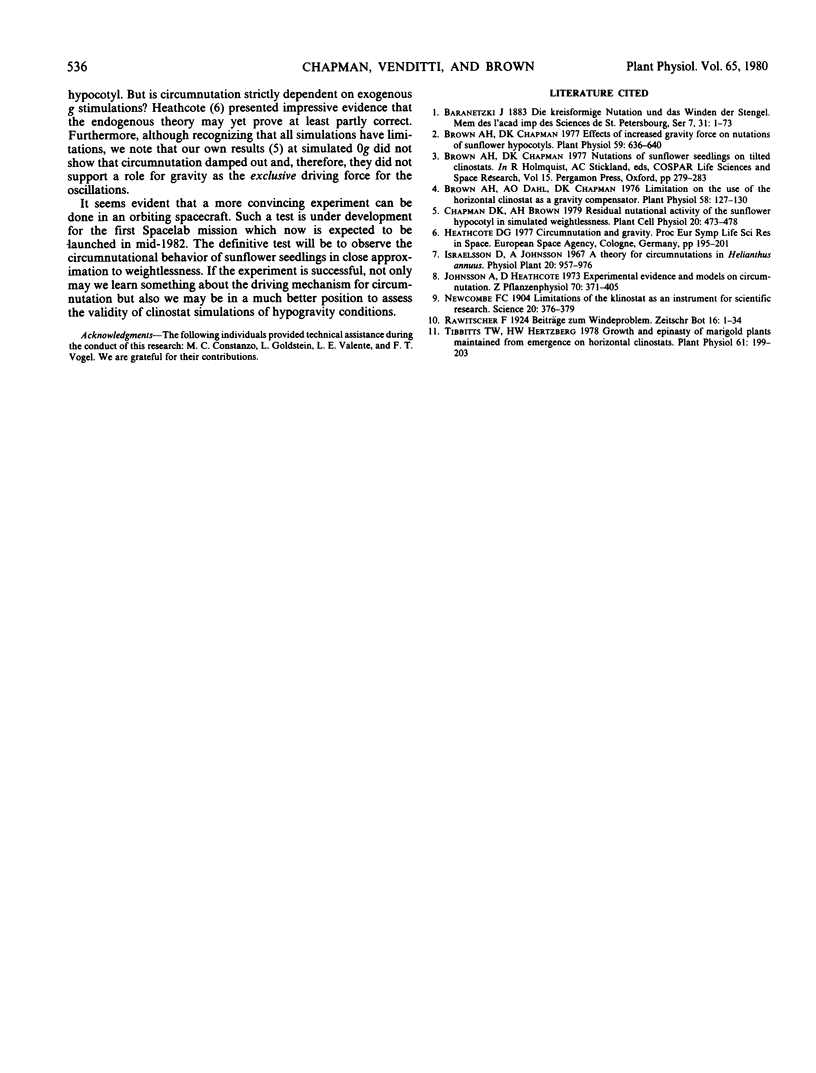Abstract
For more than a decade research on the botanical mechanism responsible for circumnutation has centered on whether or not these nearly ubiquitous oscillations can be attributed to a hunting process whereby the plant organ continuously responds to the gravity force and, by overshooting each stimulus, initiates a sustained oscillation or, driven by a not yet defined autogenic mechanism, performs oscillatory activities that require no external reinforcement to maintain the observed rhythms of differential growth.
We explore here the effects of altered gravity force on parameters of circumnutation. Following our earlier publication on circumnutation in hypergravity we report here an exploration of circumnutation in hypogravity.
Parameters of circumnutation are recorded as functions of the axially imposed gravity force. The same method was used (two-axes clinostat rotation) to produce sustained gravity forces referred to as hypergravity (1 < g), hypogravity (0 [unk] g < 1), and negative gravity (−1 < g < 0). In these three regions of the g-parameter nutational frequency and nutational amplitude were influenced in different ways.
The results of our tests describe the gravity dependence of circumnutation over the full range of real or simulated gravity levels that are available in an earth laboratory. Our results demonstrated that nutational parameters are indeed gravity-dependent but are not inconsistent with the postulate that circumnutation can proceed in the absence of a significant gravity force.
Full text
PDF



Selected References
These references are in PubMed. This may not be the complete list of references from this article.
- Brown A. H., Chapman D. K. Effects of increased gravity force on nutations of sunflower hypocotyls. Plant Physiol. 1977 Apr;59(4):636–640. doi: 10.1104/pp.59.4.636. [DOI] [PMC free article] [PubMed] [Google Scholar]
- Brown A. H., Chapman D. K. Nutations of sunflower seedlings on tilted clinostats. Life Sci Space Res. 1977;15:279–283. [PubMed] [Google Scholar]
- Brown A. H., Dahl A. O., Chapman D. K. Limitation on the use of the horizontal clinostat as a gravity compensator. Plant Physiol. 1976 Aug;58(2):127–130. doi: 10.1104/pp.58.2.127. [DOI] [PMC free article] [PubMed] [Google Scholar]
- Newcombe F. C. LIMITATIONS OF THE KLINOSTAT AS AN INSTRUMENT FOR SCIENTIFIC RESEARCH. Science. 1904 Sep 16;20(507):376–379. doi: 10.1126/science.20.507.376-b. [DOI] [PubMed] [Google Scholar]
- Tibbitts T. W., Hertzberg W. M. Growth and epinasty of marigold plants maintained from emergence on horizontal clinostats. Plant Physiol. 1978 Feb;61(2):199–203. doi: 10.1104/pp.61.2.199. [DOI] [PMC free article] [PubMed] [Google Scholar]


